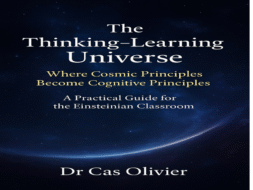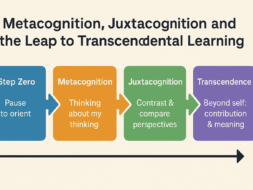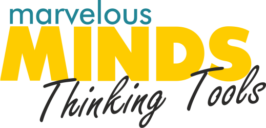The uniqueness of the approach
This Marvelous Minds integrated learning approach emphasizes the integration of different cognitive levels, each contributing to a comprehensive understanding of subjects.
This holistic revolutionary concept integrates multiple levels of learning: macro, meso, micro, nano, and pico. Each level incorporates elements of the others to create a dynamic and thorough learning experience. This holistic OMNI approach to learning represents an all-encompassing approach to education, focusing on different levels of learning to provide a complete and interconnected understanding. It must be noted that each level relates not only to a field of knowledge, but also to this use of specific default innate Thinking Tools as well as Bloom's levels of thinking. It also relates to levels of Emotional Intelligence.
The advantages only a brain-based approach to teaching and learning can provide
This Marvelous Minds Integrated learning approach prioritizes the development of thinking skills over the mere mastery of knowledge. This prepares learners to effectively utilize AI as a powerful tool while maintaining their cognitive independence. By fostering critical thinking, problem-solving, and adaptability, this approach ensures that learners are not only proficient in using AI but are also capable of innovating and leading in an AI-driven world.
What is the Macro level of learning?
The Macro level involves long-term understanding and big picture insight and thinking. At this level thinking involves integration and deep comprehension of broad concepts over extended periods. It integrates meso-level analysis (intermediate details), micro-level insights (specific data), nano-level strategies (cognitive processes), and pico-level focus (fundamental neural activities). For example, studying world history over decades, incorporating insights from specific historical events (micro), cultural influences (meso), and individual experiences (nano and pico).
What is the Meso level of learning?
The Meso level involves intermediate refinement and application thinking. At this level thinking involves applying and refining knowledge over medium-term periods. It builds on macro learning's holistic understanding, micro-level insights, and the detailed cognitive processes of nano and pico learning. It also reinforces macro learning.
For example, learning a new language over several months, integrating grammar (micro), culture (macro), everyday use (nano), and phonetic practice (pico).
What is the Micro level of learning?
The Micro level involves short-term processing and detail thinking. At this level thinking involves processing of specific information, essential for handling immediate tasks and mastering of facts and concepts. This relates to Standard Operating Procedures. For example, mastering of Standard Operating Procedures thinking where detailed information (micro) is embedded in broader concepts (macro), practical skills (meso), and immediate recognition (nano and pico).
What is the Nano level of learning?
Nano Level involves automatisms which is the performance of actions without having to conscious think them through as they are embedded cognitive
strategies At this level thinking focuses on very rapid cognitive processes and subtle strategies that are available for immediately applicable.
It connects fundamental neural activities of pico learning with the specific data of micro learning and intermediate applications of meso learning.
For example, solving complex mathematical problems, where immediate calculations (nano) work in tandem with deep understanding (macro), short-term memory (micro), and intermediate application (meso).
What is the Pico level of learning?
Pico level thinking involves fundamental neural processes. At this level thinking focuses on the basic, fast neural processes that form the foundation for all other learning. These
micro-processes are crucial for quickly adapting to and processing new information. Nano level thinking involves slightly more complex cognitive processes that are quick and foundational. For example, pattern recognition when identifying the structure of the quadratic equation and recognizing common forms and patterns and can immediately translate the equation into a parabola that meets the criteria of the equation.
The same applies to looking at a straight line and able to immediately translate it back to the equation without overt micro and nano calculations.
This approach emphasizes a holistic, integrated approach to education which ensures that every learning process at each level (macro, meso, micro, nano, pico) incorporates the other levels, resulting in a deep and multi-dimensional learning experience. This comprehensive method helps students not only process information quickly but also develops long-term knowledge and skills essential for thriving in a complex and dynamic world.







